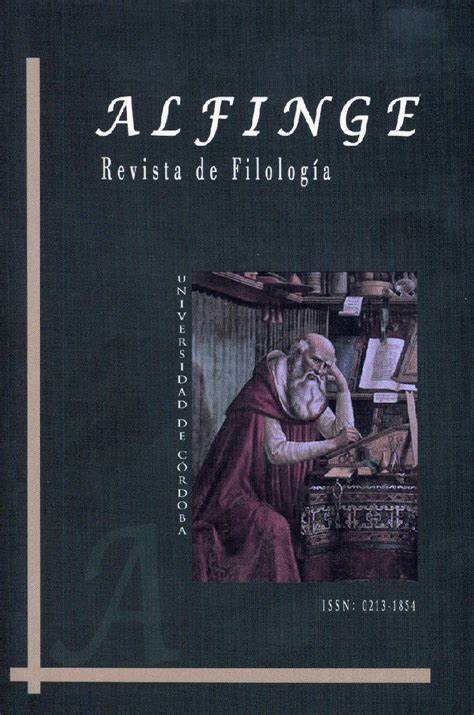Cosmópolis: la paradoja de Aquiles y la tortuga
Contenido principal del artículo
Resumen
Descargas
Detalles del artículo

Esta obra está bajo una licencia internacional Creative Commons Atribución-NoComercial-CompartirIgual 4.0.
Política propuesta para revistas que ofrecen acceso abierto. Aquellos autores/as que tengan publicaciones con esta revista, aceptan los términos siguientes:
- Los autores/as conservarán sus derechos de autor y garantizarán a la revista el derecho de primera publicación de su obra, el cuál estará simultáneamente sujeto a la Licencia de reconocimiento de Creative Commons que permite a terceros compartir la obra siempre que se indique su autor y su primera publicación esta revista.
- Los autores/as podrán adoptar otros acuerdos de licencia no exclusiva de distribución de la versión de la obra publicada (p. ej.: depositarla en un archivo telemático institucional o publicarla en un volumen monográfico) siempre que se indique la publicación inicial en esta revista.
- Se permite y recomienda a los autores/as difundir su obra a través de Internet (p. ej.: en archivos telemáticos institucionales o en su página web) antes y durante el proceso de envío, lo cual puede producir intercambios interesantes y aumentar las citas de la obra publicada. (Véase El efecto del acceso abierto).
Citas
Causo, Massimo, “Cosmopolis. David Cronenberg: Il mondo interno dell´esterno dell´interno”. En: Cineforum, 515, 2012, pp. 4-7.
Cavallar, Jonathan, “Las paradojas del movimiento de Zenón de Elea y el testimonio platónico”. En: Aporía: revista internacional de investigaciones filosóficas, 2, 2011, pp. 77-93.
Chandler, Aaron, “An Unsetting, Alternative Self”: Benno Levin, Emmanuel Levinas and Don DeLillo´s Cosmopolis”. En: Critique: Studies in contemporary Fiction, 50, 2009, pp. 241-260. DOI: https://doi.org/10.3200/CRIT.50.3.241-260
Clavin, Keith, “Narrating Risk: the Finantial Thriller Film during the U.S. Recession”. En: Textual Practice, 31, 2017, pp. 477-490. DOI: https://doi.org/10.1080/0950236X.2017.1294893
Curcic, Miroslav, “Don DeLillo´s Point Omega: Discourses of Time, Space and Consciousness”. En Lopičić, Vesna & Mišić-Ilić, Biljana (edd.), Jezik, književnost, diskurs: književna istraživanja. Niš: Universitet u Nišu, 2015; pp. 509-520.
DeLillo, Don, Cosmopolis. Barcelona: Seix Barral, 2004.
Duvall, John N., The Cambridge Companion to Don DeLillo. Cambridge: Cambridge University Press, 2008. DOI: https://doi.org/10.1017/CCOL9780521870658
Echandi Ercila, S., La fábula de Aquiles y Quelone: ensayos sobre Zenón de Elea. Zaragoza: Prensas Universitarias de Zaragoza, 1993.
Garrigós, Cristina, “Death Drive and Desire in Cronenberg´s Adaptation of DeLillo´s Cosmopolis”. En: Critique: Studies in Contemporary Fiction, 56, 2015, pp. 519-530. DOI: https://doi.org/10.1080/00111619.2014.959641
Gorostiza, J. & Pérez Plasencia, A., David Cronenberg. Madrid: Cátedra (reed.), 2003.
Grugeau, Gérard, “L´homme flambé/Cosmopolis de David Cronenberg”. En: 24 Images, 158, 2012, pp. 62-63.
Heyne, Eric, “A Bruised Cartoonish Quality”: The Death of an American Supervillain in Don DeLillo´s Cosmopolis”. En: Critique: Studies in Contemporary Fiction, 54, 2013, pp. 438-451. DOI: https://doi.org/10.1080/00111619.2011.618851
Kirk, G. S., Raven, J. E. & Schonfield, M., Los filósofos presocráticos. Madrid: Gredos (reed.), 1987.
Laist, Randy, “The concept of dissapearance in Don DeLillo´s Cosmopolis”. En: Critique: Studies in Contemporary Fiction, 51, 2010, pp. 257-275. DOI: https://doi.org/10.1080/00111610903379966
Leps, Marie-Christine, “How to map the non-place of empire: DeLillo´s Cosmopolis”. En: Textual Practice, 28, 2014, pp. 305-327. DOI: https://doi.org/10.1080/0950236X.2013.858067
Merola, N. M., “Cosmopolis: Don DeLillo´s Melancholy Political Ecology”. En: American Literature: A journal of literary history, criticism and bibliography, 84, 2014, pp. 827-852. DOI: https://doi.org/10.1215/00029831-1901454
Mirbabazade, Fateme Seyyede & Jafari, Alizera, “Consumption as Sign in Don DeLillo´s Cosmopolis”. En: International Journal of Applied Linguistics and English Literature, 2, 2013, pp. 67-75. DOI: https://doi.org/10.7575/aiac.ijalel.v.2n.6p.67
Noble, Stuart, “Don DeLillo and Society’s Reorientation to Time and Space: An Interpretation of Cosmopolis”. En: Aspeers: Emerging voices in American Studies, 1, 2008, pp. 57-70. DOI: https://doi.org/10.54465/aspeers.01-06
Otero Furelo, M. A., “Cosmópolis, de Don DeLillo”. En: Eduga: revista galega do ensino, 43, 2004, pp. 236-238.
Peterle, Giada, “Moving Literature: the car as a mobile chronotope in Don DeLillo´s Cosmopolis”. En: Rivista geográfica italiana, 3, 2016, pp. 281-300.
Rodica, Mihaila, “Deconstructing the “rags to riches” Etos in the Recent American Novel: DeLillo´s *Cosmopolis* and Cormac McCarthy´s *The Road*”. En Gurpegui Palacios, J. A. y Durán Giménez-Rico, I. (edd.), The Backyard of the U. S. Mansion. Alcalá de Henares (Madrid): Universidad de Alcalá, 2012; pp. 89-100.
Sánchez Bravo, E., “Aspectos filosóficos en la obra de Don DeLillo: tiempo, arte, cibercapital, y muerte en la postmodernidad”. En: Paradoxa, 16, 2014, pp. 243-301.
Sciolino, Martina, “The Contemporary American Novela as World Literature: The Neoliberal Antihro in Don DeLillo´s Cosmopolis”. En: Texas Studies in Literature & Language, 57, 2015, pp. 210-241. DOI: https://doi.org/10.7560/TSLL57204
Strombeck, Andrew, “The Limousine and Technicity in Don DeLillo’s Cosmopolis”. En: MFS. Modern Fiction Studies, 63, 2017, pp. 146-167. DOI: https://doi.org/10.1353/mfs.2017.0008
Tovar Paz, Francisco Javier, “Las puertas de los sueños auténticos y de los sueños falaces en la película Eyes Wide Shut (1999), de Stanley Kubrick”. En Vv.Aa., Homenaje a la profesora Carmen Pérez Romero. Cáceres: Facultad de Filosofía y Letras de la Universidad de Extremadura, 2000; pp. 365-372.
Valentino, Russell Scott, “From Virtue to Vitual: DeLillo´s Cosmopolis and the Corruption of the Absent Body”. En: MFS. Modern Fiction Studies, 53, 2007, pp. 140-162. DOI: https://doi.org/10.1353/mfs.2007.0035
